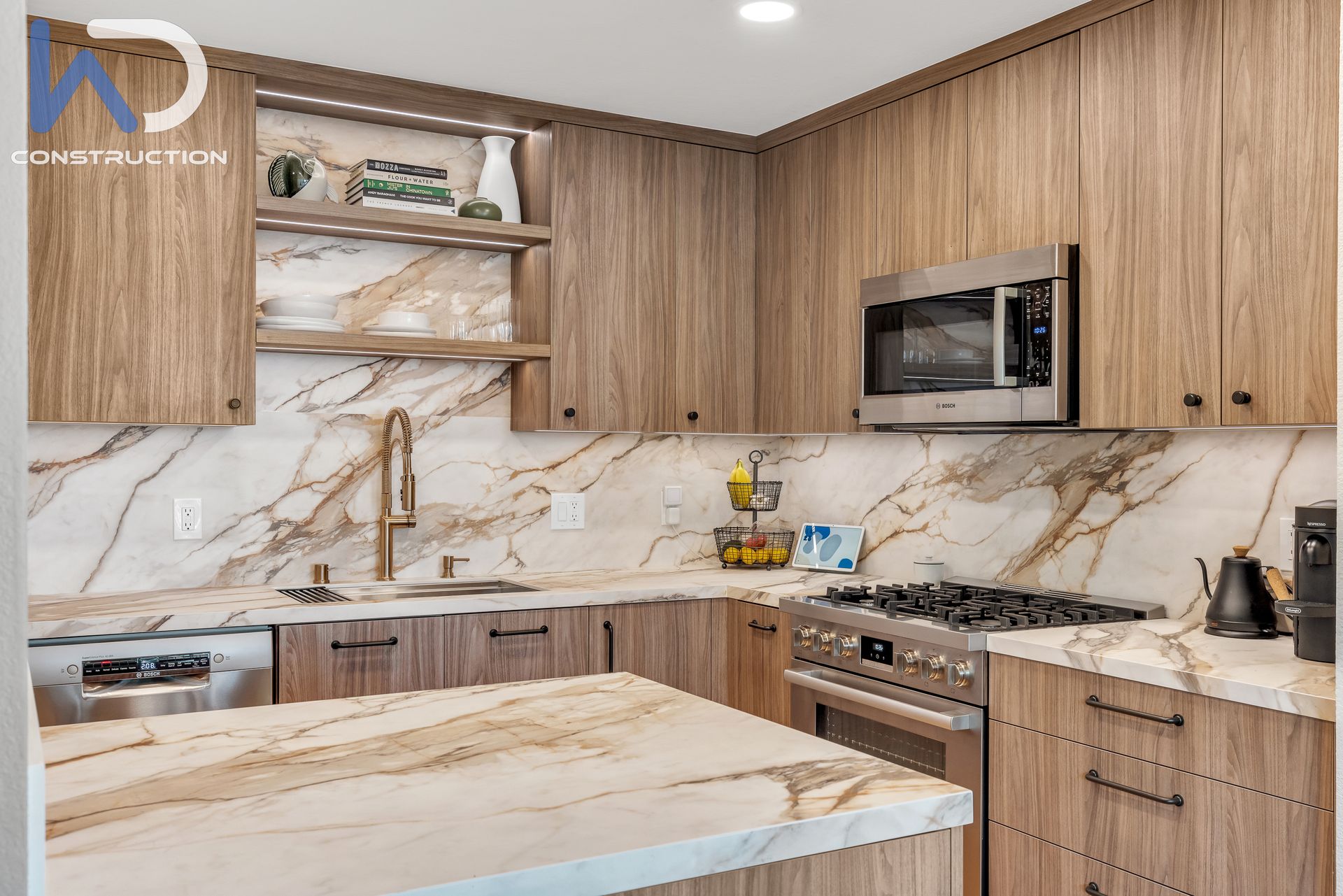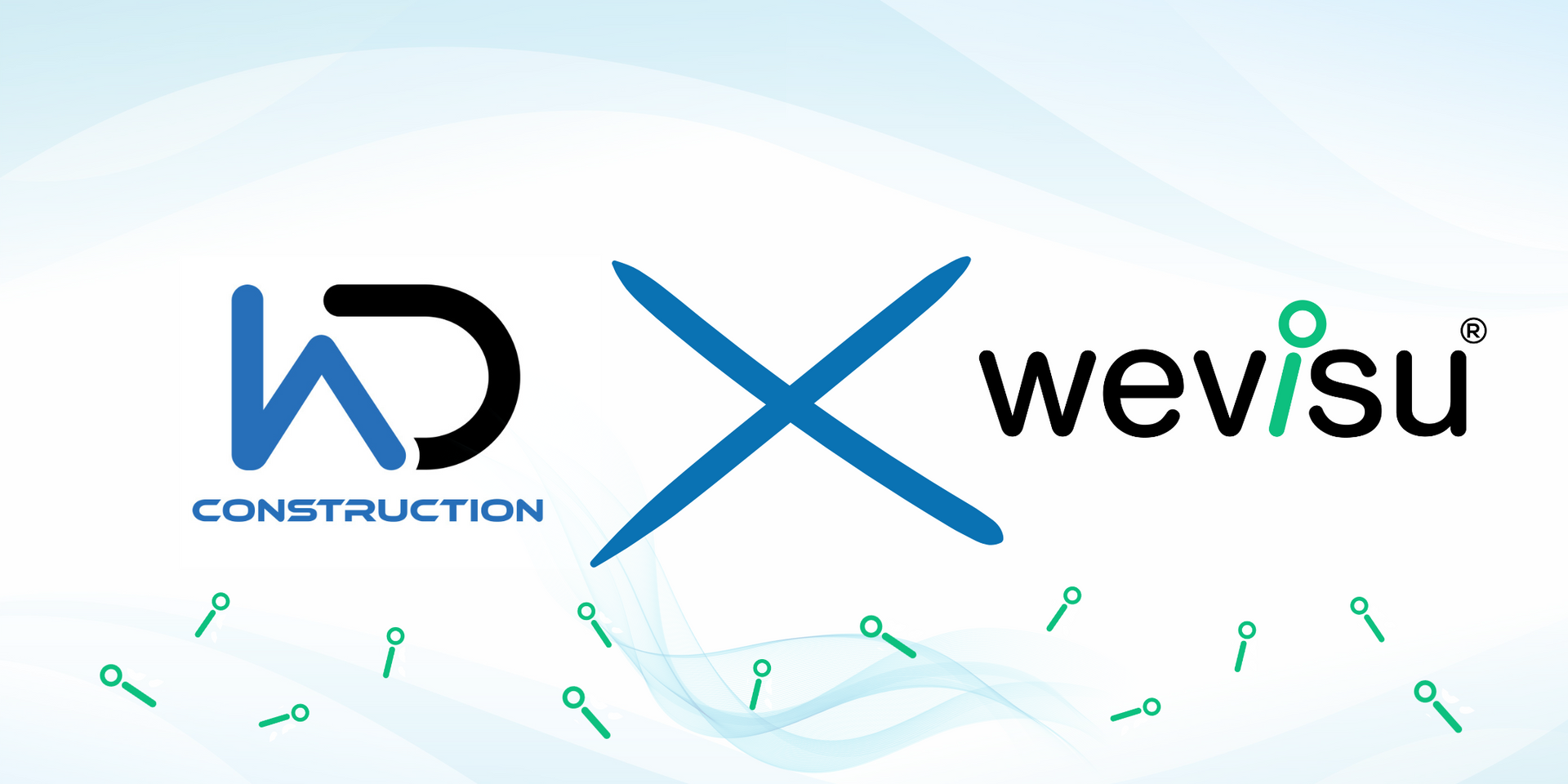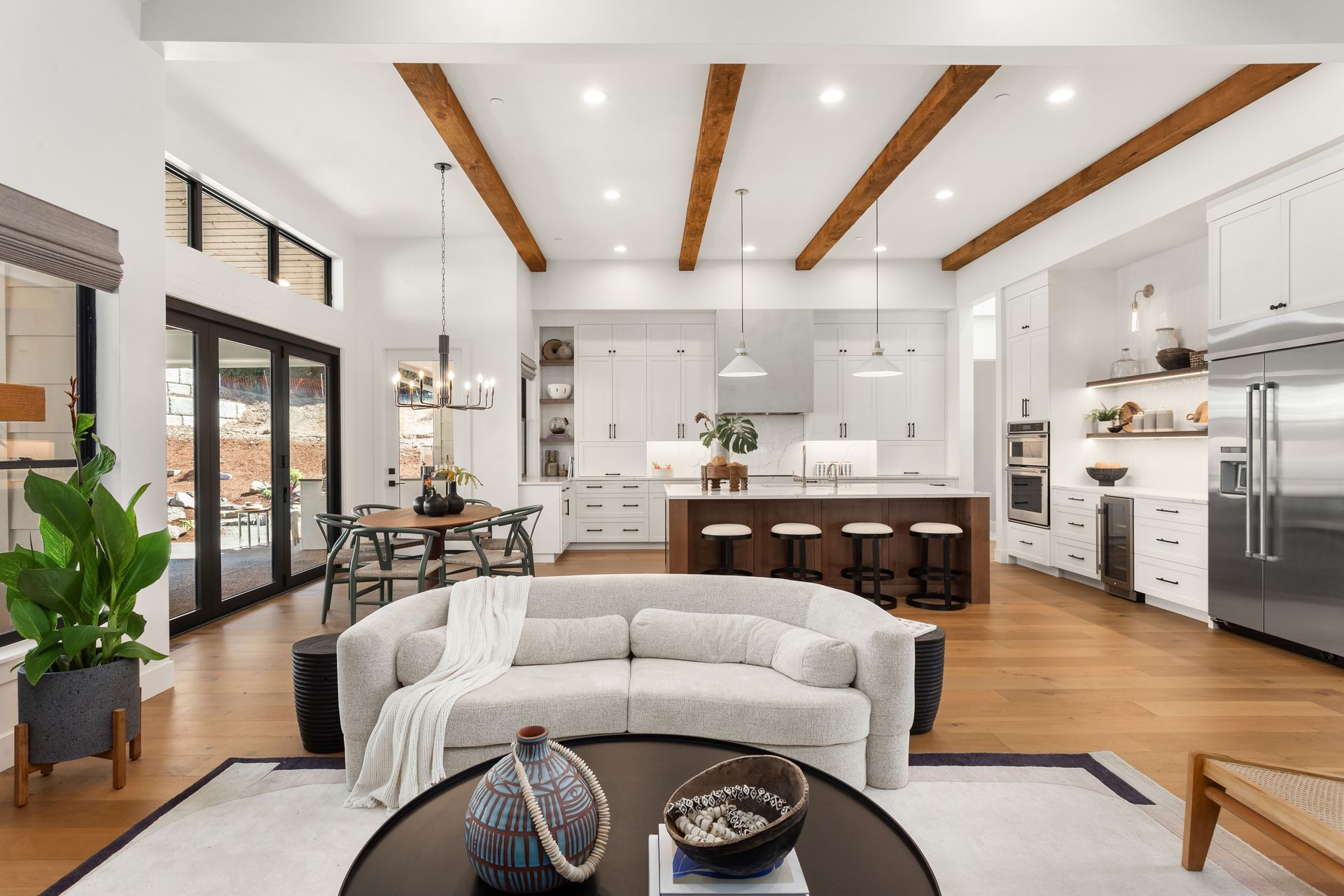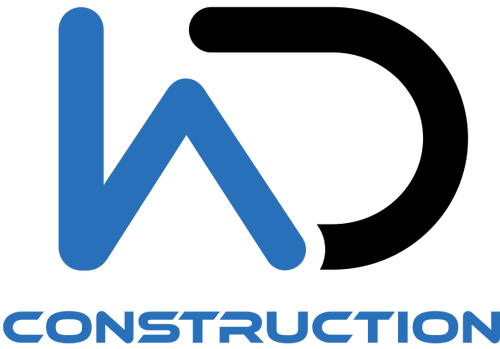The Complete Guide to Full House Remodels in Mill Valley:
Costs, Design Plans, & End Materials
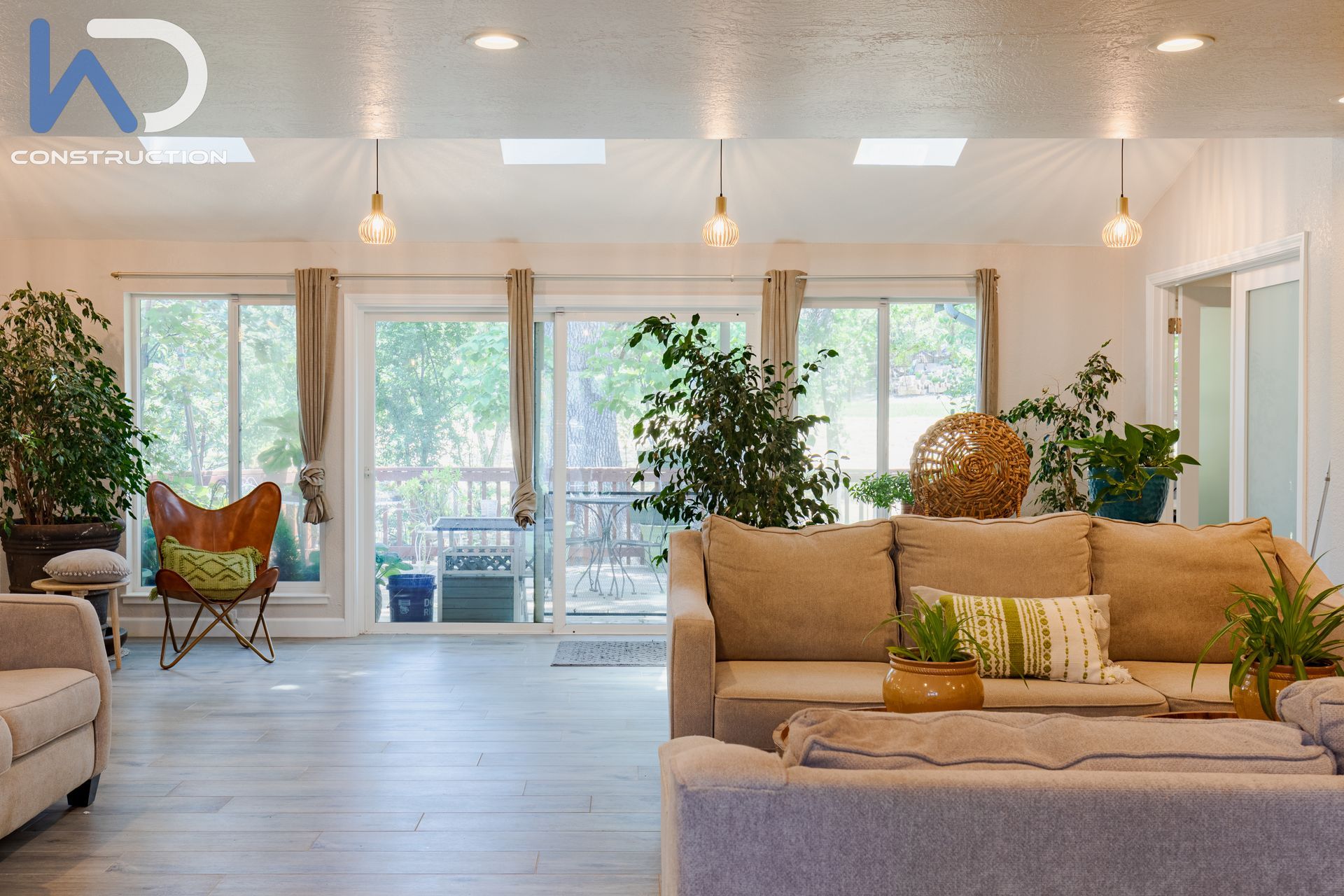
It’s more than construction…
When you embark on a full house remodel in Mill Valley, you’re not just updating a few rooms — you’re completely transforming your living environment. Whether you focus on modernizing an older house, expanding your square footage, or optimizing your space for improved functionality, a comprehensive remodel involves careful planning, budgeting, and decision-making. From understanding the remodeling process to determining average costs, this guide will walk you through the entire process.
Not only does a well-executed house renovation enhance your daily life, but it also adds significant value to your property. You can maximize your comfort and your home's resale value by choosing the right end materials, hiring experienced professionals, and following a detailed plan.
Table of Contents
- Introduction to Full House Remodels
- Understanding the Remodeling Process
- Breaking Down the Costs of a Full Remodel
- Crafting a Smart Design Plan
- Choosing the Best Materials for Your Remodel
- Maximizing Resale Value with Smart Renovations
- Starting Your Home Remodel w/ We Do Construction

1. Introduction to Full House Remodels
A full house remodel is an extensive project that involves the renovation of your entire home. In Mill Valley, many homeowners are choosing to do this to update older homes, increase square footage, or create more functional and modern spaces. Whether you’re upgrading your living room, transforming your kitchen, or adding an accessory dwelling unit (ADU), a full remodel encompasses multiple facets of home remodeling.
Here’s what you can expect:
- Scope of Work: A full home renovation usually involves tackling several rooms at once, often including major projects like a kitchen remodel, bedroom renovation, and living area upgrades. Depending on your goals, it may also include plumbing work, electrical work, demolition work, and structural modifications.
- Time Commitment: A project of this scale is likely to span several months. Remodeling projects involving large-scale structural changes or high-end finishes can take even longer, particularly if there are any permitting delays or unforeseen complications.
The decision to undertake a full house renovation is a significant one, but with the right preparation, it can transform your home into a personalized sanctuary that enhances both your daily life and your long-term investment.
2. Understanding the Remodeling Process
The remodeling process is multi-faceted and requires careful planning at each stage. From initial consultations to finishing touches, here’s what a typical house renovation in Mill Valley looks like:
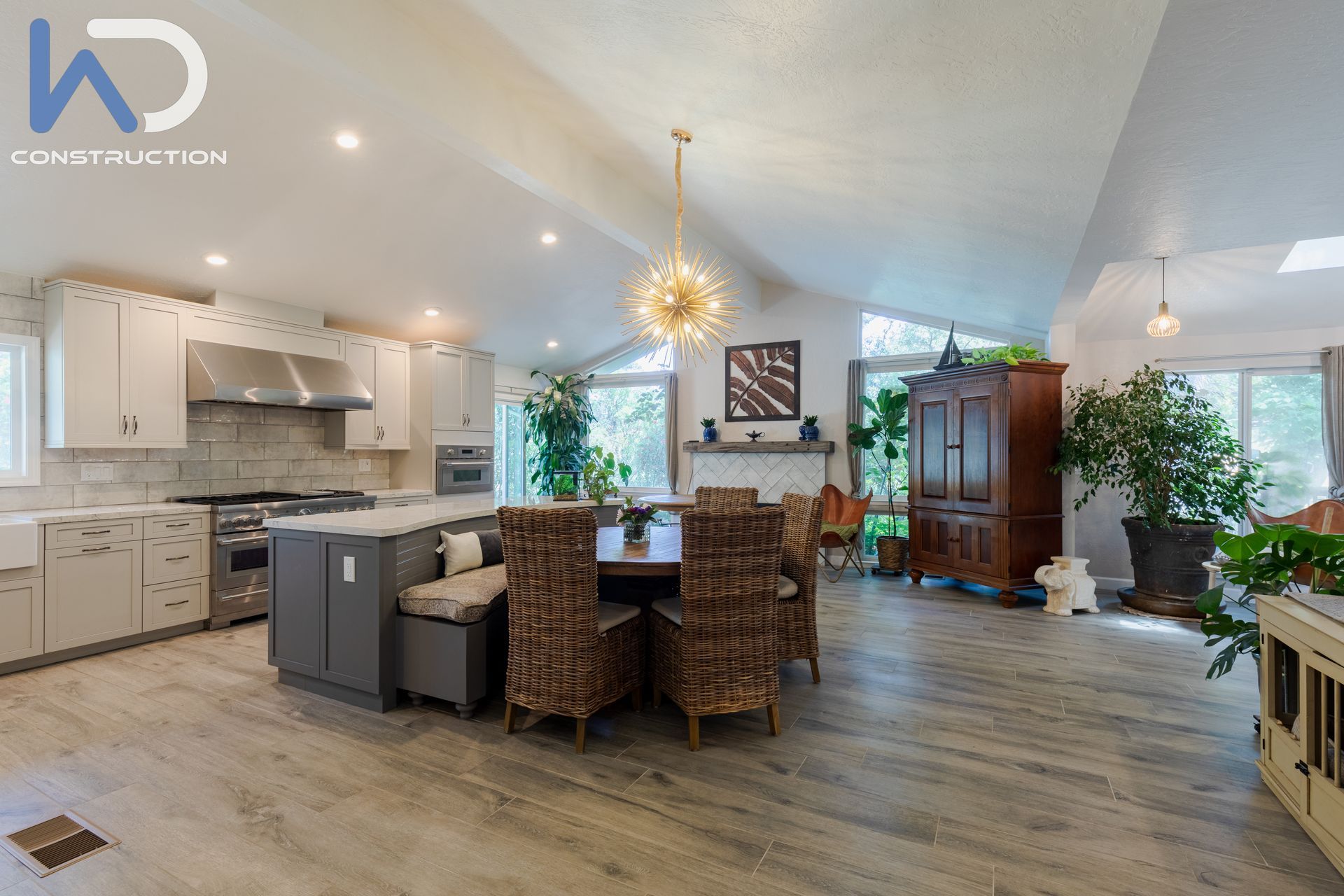
a) Initial Consultation and Design Planning
At the start of your home remodeling project, you’ll meet with a renovation contractor to discuss your vision and goals. This is where you’ll begin shaping the design plan for your renovation. The contractor will assess the current condition of your home and suggest modifications to achieve your desired outcome, whether it’s updating the floor plan or modernizing specific rooms.
During this stage, the contractor will provide cost estimates and help you develop a home renovation budget. Your detailed plan should include not only end materials but also a clear timeline for the construction phase and the types of professionals — like structural engineers or electricians — you might need.
b) Demolition and Structural Work
Once the design phase is complete, the real work begins with demolition work. Depending on the extent of the remodel, you may need to gut certain rooms or remove walls. This is particularly common in older homes or when large-scale structural changes are needed to achieve your floor plan goals.
If you’re doing a gut renovation, this phase can take a while as it often includes tearing out old plumbing and wiring. Structural engineers may also be involved to ensure that any major alterations are completed safely.
c) Construction Phase
After demolition, the construction phase begins. This is where your new home starts to take shape. New rooms are built out, walls are framed, and plumbing work and electrical work are completed. Depending on your design plan, you might also be adding new features like an accessory dwelling unit or expanding the square footage of key living areas.
Throughout the construction phase, it’s important to maintain clear communication with your contractor to ensure the project stays on track and that any issues are addressed promptly.
d) Finishing Touches and Inspection
Once the bulk of the remodeling process is complete, you’ll enter the finishing phase, which involves painting, flooring, and installing new fixtures. You’ll also need to schedule a final inspection to ensure that all structural changes and updates meet local building codes. After that, you can begin moving back in and enjoying your newly remodeled home.
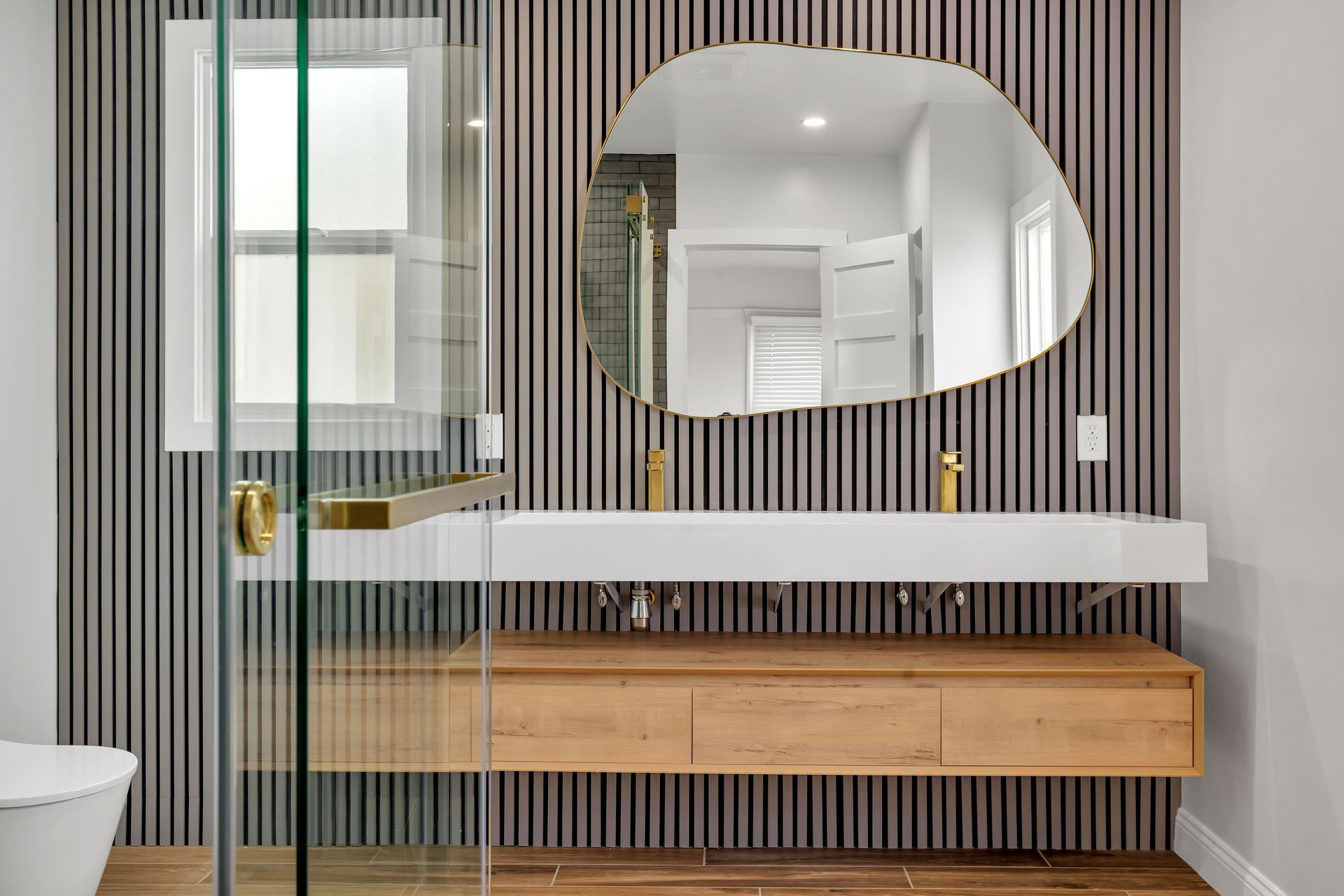
3. Breaking Down the Costs of a Full Remodel
Cost is one of the most significant factors in any home remodeling project. Understanding the full range of potential expenses helps you better plan your home renovation budget and avoid surprises later in the process. Here’s a breakdown of the average costs associated with a full house renovation:
a) Design and Planning
Cost Range: $10,000 to $50,000This includes the fees for architectural designs, permits, and hiring a professional designer to help develop your home design plan. If you’re working with a design-build firm, these costs may be bundled into the overall remodeling project.
b) Demolition and Structural Changes
Cost Range: $15,000 to $40,000The cost of demolition work can vary significantly depending on how extensive the teardown is. In addition to gutting rooms, this phase might involve removing walls or ceilings to accommodate new floor plans.
c) Plumbing and Electrical Work
Plumbing Work: $8,000 to $25,000
Electrical Work: $7,000 to $20,000Updating outdated systems or adding entirely new systems is one of the most critical aspects of your home renovation project. Major updates are often required in older homes to meet modern building codes and improve overall functionality.
d) Finishing Materials and Fixtures
Flooring: $10,000 to $50,000
Cabinetry and Countertops: $15,000 to $60,000
The choice of materials for your end materials will significantly impact the final cost. For example, marble countertops or custom cabinetry will be far more expensive than prefabricated options.
e) Total Cost Estimate
In Mill Valley, a complete house remodel typically costs between $150,000 and $600,000. These numbers can vary depending on factors like square footage, the quality of materials, and whether you’re making major structural changes to your home.
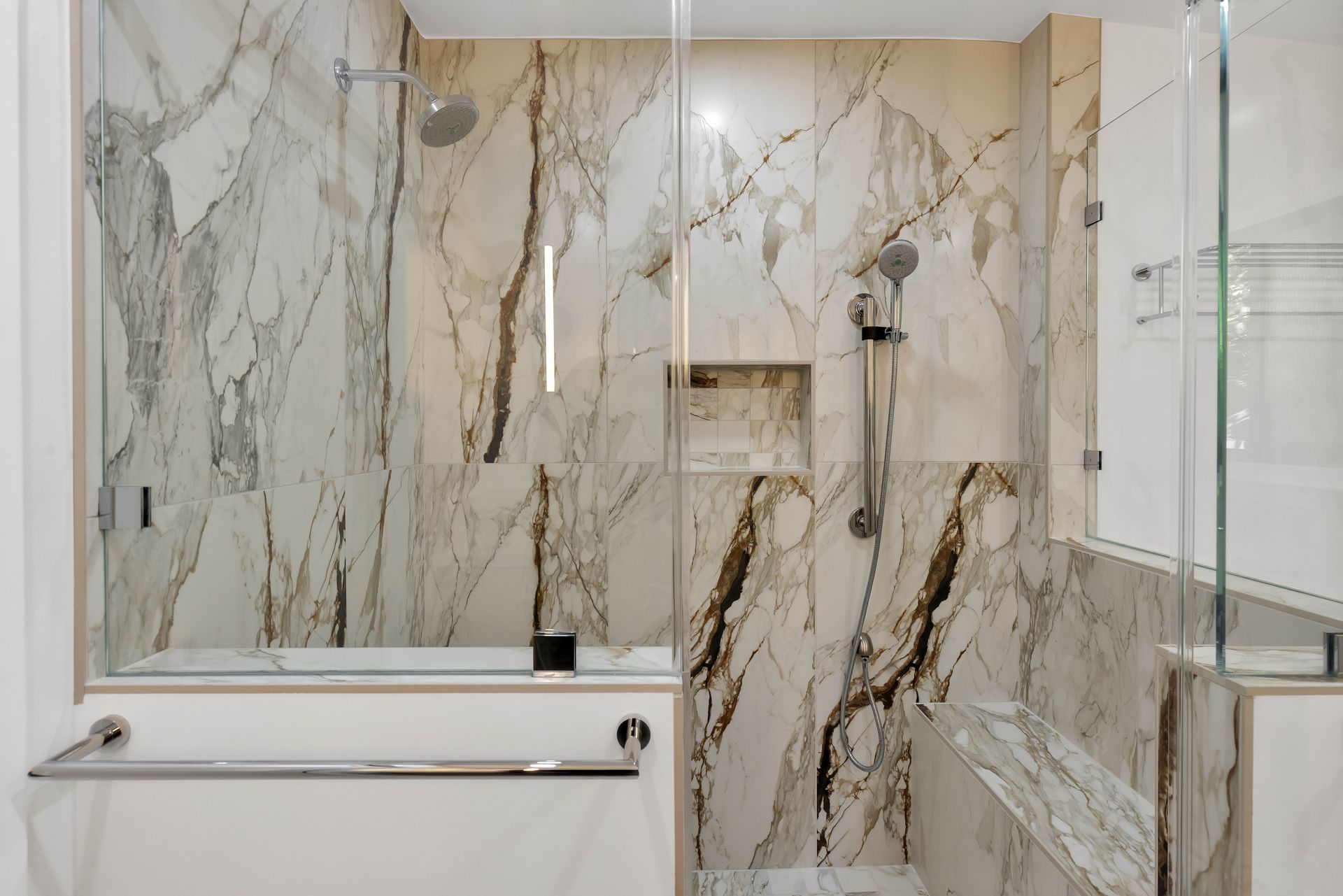
4. Crafting a Smart Design Plan
A design plan is essential for ensuring that all aspects of your house renovation work harmoniously together. It’s where your floor plan, materials, and personal style come together to create a functional and aesthetically pleasing space. Here’s how to develop an effective design plan for your entire home remodel.
a) Floor Plan
A well-thought-out floor plan can dramatically change how you use your space. Many homeowners in Mill Valley opt for an open-concept layout to create a more spacious and fluid environment, particularly for smaller homes.
When developing your floor plan, consider how the flow of each room will impact your daily life. For example, adding more storage or expanding the square footage of key living areas can make your home feel more livable. If you’re adding an accessory dwelling unit (ADU), think about how it will blend with the main house and whether you’ll use it for guests, rentals, or other purposes.
b) Material Comparisons
When it comes to choosing materials, there are countless options available. The materials you select will not only affect the appearance of your home but also your renovation costs and resale value. Here’s a comparison of some popular materials used in remodeling projects:
- Hardwood vs. Luxury Vinyl Plank (LVP): Hardwood is highly desirable for its longevity and resale value, but it’s also more expensive. LVP, on the other hand, is affordable, durable, and water-resistant, making it an excellent choice for high-moisture areas like bathrooms or kitchens.
- Quartz vs. Marble Countertops: Quartz is known for its low maintenance and durability, while marble is an elegant, high-end choice that requires more care. If you’re looking to increase your home’s resale value, quartz is a safer investment, whereas marble is perfect for accent areas.
c) Our Recommendation
We recommend using hardwood flooring in high-traffic areas like the living room and bedroom while opting for LVP in the kitchen and bathrooms. For countertops, quartz is a fantastic option due to its durability and modern look. Reserve marble for smaller, high-impact areas such as bathroom vanities.
5. Choosing the Best Materials for Your Remodel
When selecting materials for your home remodeling project, it’s essential to balance aesthetics, functionality, and cost. Below are some of the best materials to consider for different parts of your home:
- Flooring: Hardwood, engineered wood, or luxury vinyl plank (LVP)
- Countertops: Quartz, granite, or marble
- Cabinetry: Custom wood or pre-finished options
- Lighting: Recessed lighting for modern homes; chandeliers for a touch of elegance
Choosing high-quality, durable materials not only improves your home’s appearance but also its resale value.
6. Maximizing Resale Value with Smart Renovations
A full house remodel in Mill Valley isn’t just about upgrading your home for your own use — it’s also a strategic investment in your future. Here are a few ways to maximize the resale value of your home:
a) Prioritize Kitchen and Bathroom Renovations
Kitchens and bathrooms are two of the most crucial areas to focus on during a remodeling project. These rooms tend to have the highest resale value in comparison to other areas. A kitchen remodel with updated appliances, cabinetry, and countertops can give you a high return on your investment.
b) Add Energy-Efficient Features
In a place like Mill Valley, energy-efficient upgrades such as solar panels, insulated windows, or even energy-efficient appliances can make your home stand out to environmentally conscious buyers. These upgrades often pay for themselves over time through reduced energy bills and increased resale value.
c) Opt for Timeless Designs
When choosing finishes and materials, it’s essential to select timeless, neutral styles that appeal to a broad range of buyers. While it’s tempting to follow the latest design trends, classic designs have longer-lasting appeal and will stand the test of time, ensuring your home remains desirable when it comes time to sell.
7. Starting Your Mill Valley Home Remodel
A full home remodel in Mill Valley is a big but rewarding project. From creating a detailed plan to choosing the right materials, each part of your home improvement project shapes the final result. Whether you’re looking to improve your daily life or boost your home’s resale value, careful planning ensures a successful entire home remodel.
At We Do Construction, we have years of experience delivering custom home remodeling projects tailored to your needs and budget. From kitchen remodels to full house renovations, we make the remodeling process smooth and stress-free.
Let Us Help You
Whether it’s an ADU addition, a living room update, or a complete house remodel, We Do Construction is ready to help in Mill Valley. We specialize in turning your vision into reality while boosting your home’s resale value.
Contact us today for a free estimate and personalized consultation:
Phone: 415–416–5494
Email: info@wdconstructions.com
Trust We Do Construction to make your Mill Valley home remodel a success!
Visit our website @ www.wedoconstructions.com
Ready to work with We Do Construction?
Let's connect! We’re here to help.
Send us a message and we’ll be in touch.
Or give us a call today at 415-416-5494
Agency Contact Form
Thank you for contacting us.
We will get back to you as soon as possible. For faster service, please call 415-416-5494
Look forward to servicing you!
– The team at We Do Construction
Please try again later
